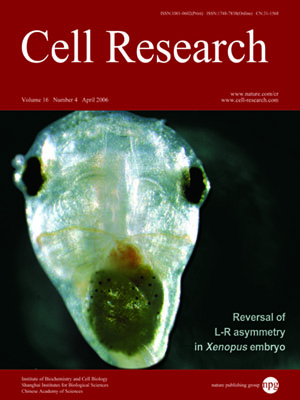
Volume 16, No 4, Apr 2006
ISSN: 1001-0602
EISSN: 1748-7838 2018
impact factor 17.848*
(Clarivate Analytics, 2019)
Volume 16 Issue 4, April 2006: 389-393
LETTERS TO THE EDITOR
Transcriptional diversity of DMRT1 (dsx- and mab3-related transcription factor 1) in human testis
Han Hua Cheng, Ming Ying, Yi Hao Tian, Yiqing Guo, Ken McElreavey, Rong Jia Zhou
Department of Genetics and Center for Developmental Biology, College of Life Sciences, Wuhan University, Wuhan 430072, China;
Department of Developmental Biology, Institut Pasteur, 25 rue du Dr Roux, 75724 Paris Cedex 15, France
Correspondence: Rong Jia Zhou(rjzhou@whu.edu.cn)
Recent advances in the evolutionary genetics of sex determination indicate that the only molecular similarity in sex determination found so far among phyla is between the fly doublesex, worm mab-3 and vertebrate DMRT1(dsx- and mab3-related transcription factor 1) /DMY genes. Each of these factors encodes a zinc-finger-like DNA-binding motif, DM domain. Insights into the evolution and functions of human DMRT1 gene could reveal evolutionary mechanisms of sexual development. Here we report the identification and characterization of multiple isoforms of human DMRT1 in the testis. These transcripts encode predicted proteins with 373, 275 and 175 amino acids and they were generated by alternative splicing at 3' region. Expression level of DMRT1a is higher than those of both DMRT1b and c, and the DMRT1c expression was the lowest in testis, based on comparisons of mean values from real-time fluorescent quantitative RT-PCR analysis. Both DMRT1b and c result from exonization of intronic sequences, including the exonization of an Alu element. A further search for Alu elements within the DMRT1 gene demonstrated that all 99 Alu elements are non-randomly distributed among the non-coding regions on both directions. These new characteristics of DMRT1 would have an important impact on the evolution of sexual development mechanisms.
Cell Research (2006) 16:395-399. doi:10.1038/sj.cr.7310050; published online 13 April 2006
FULL TEXT | PDF
Browse 1860


